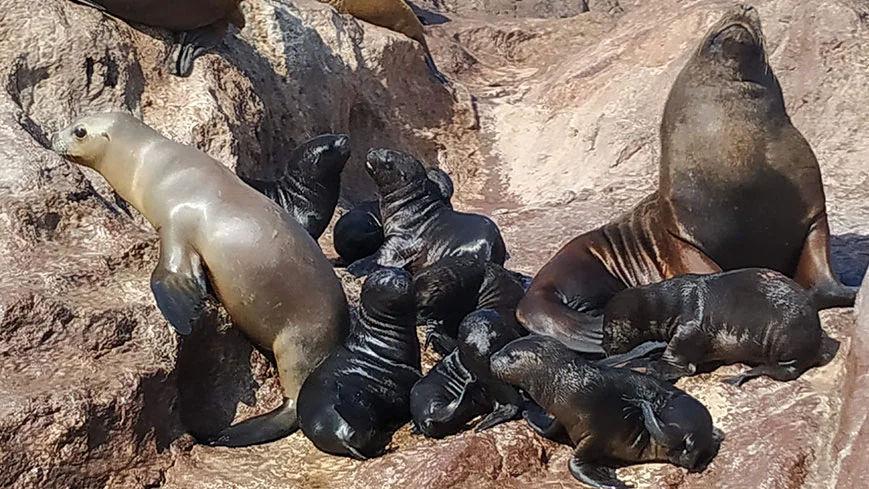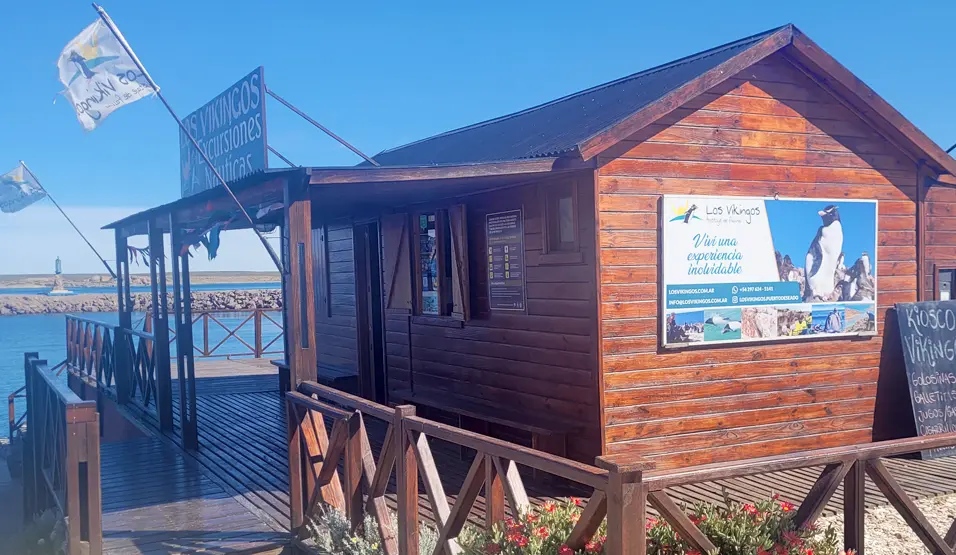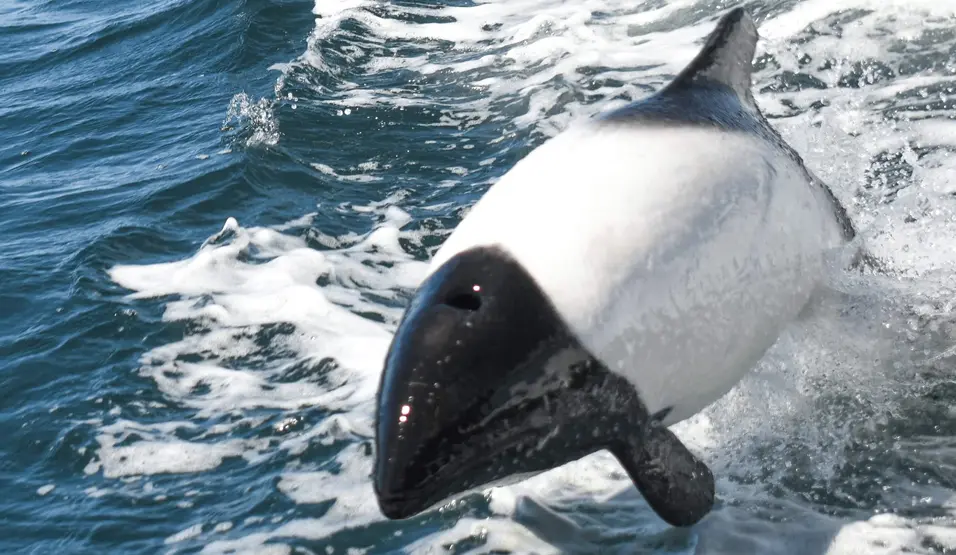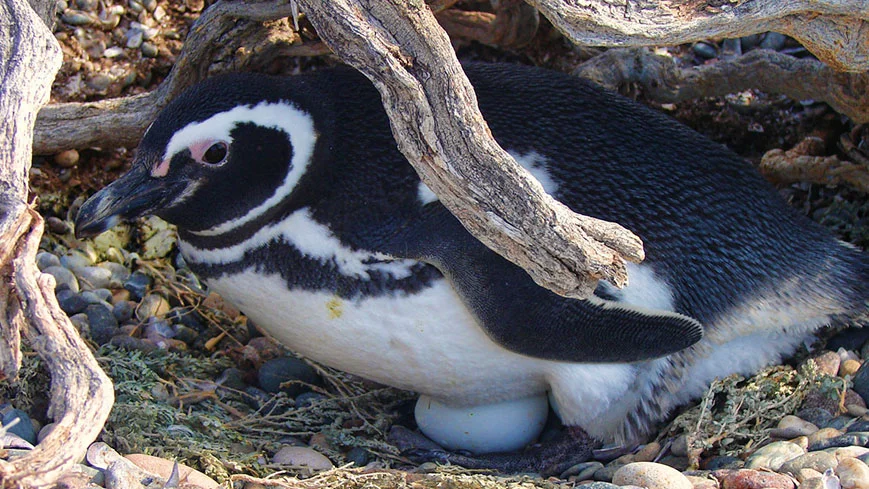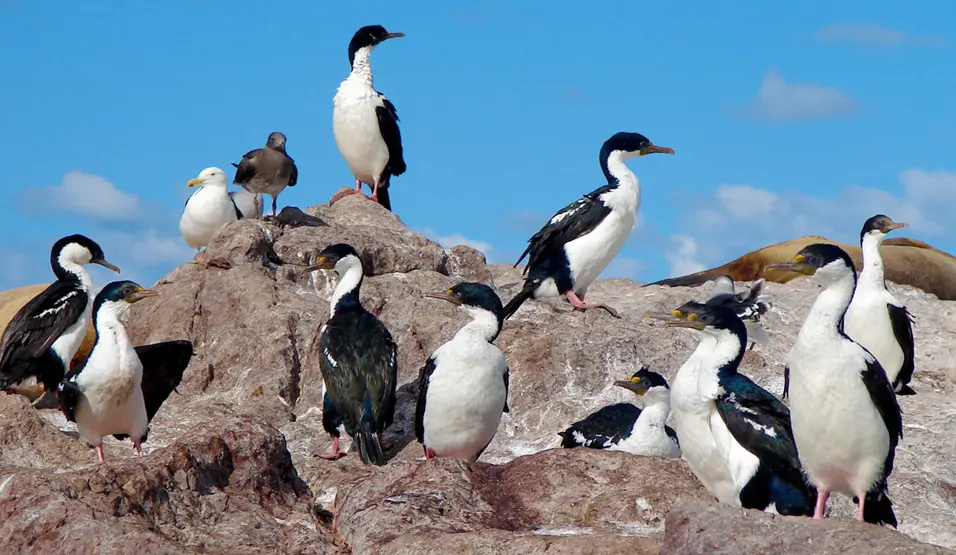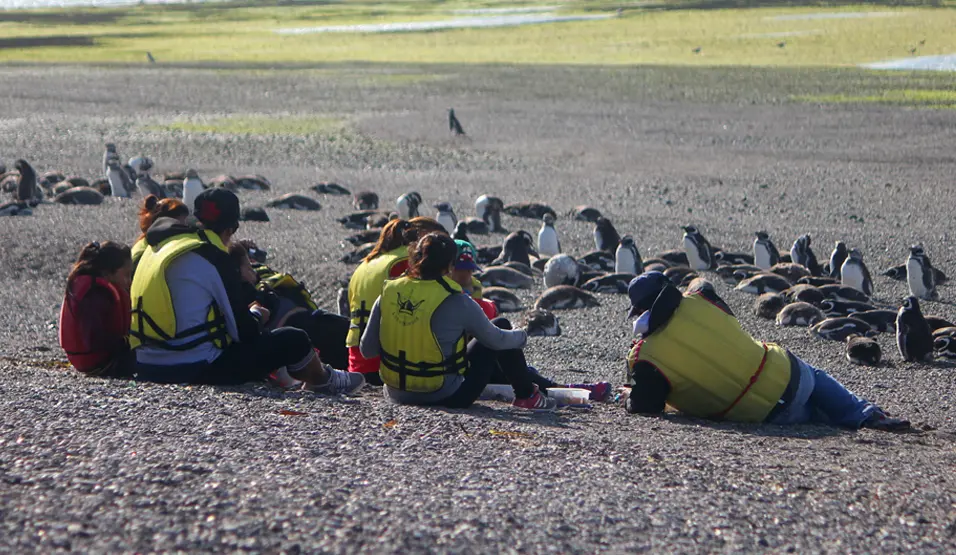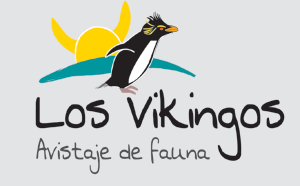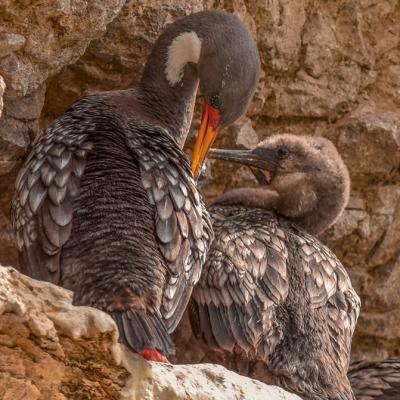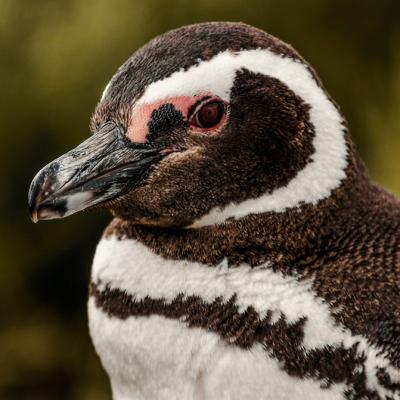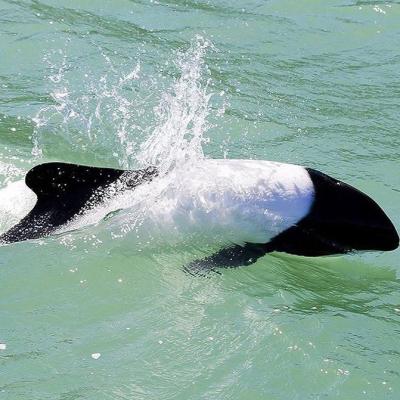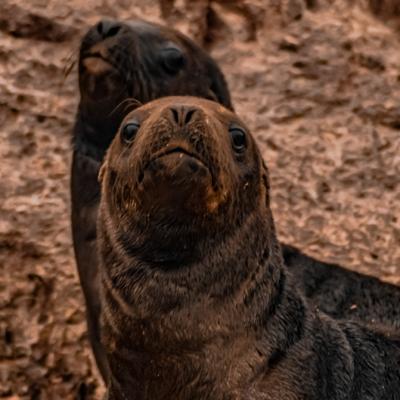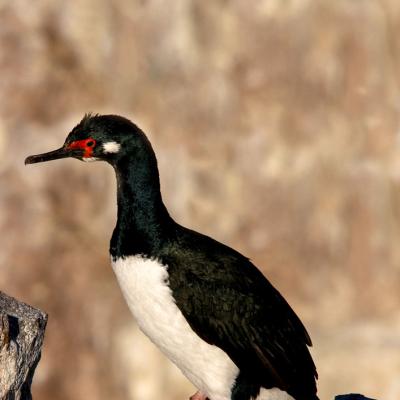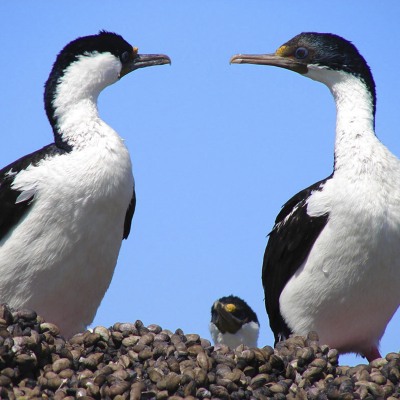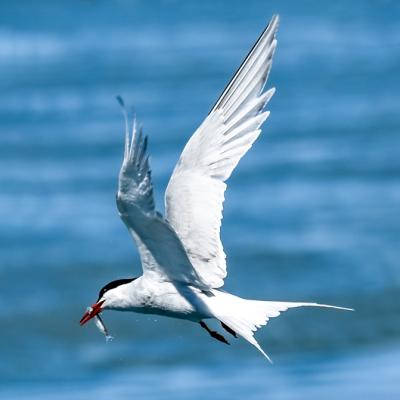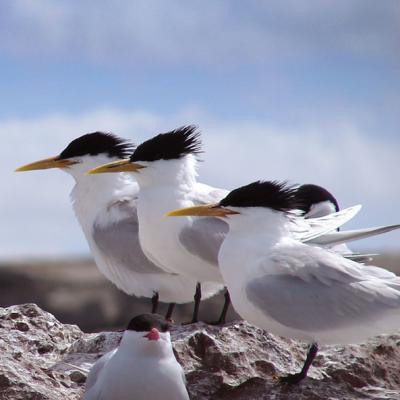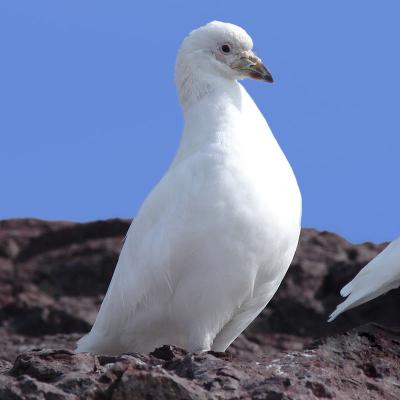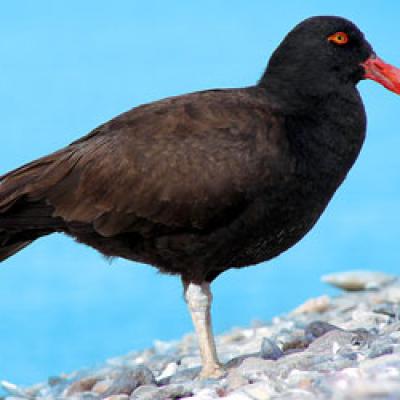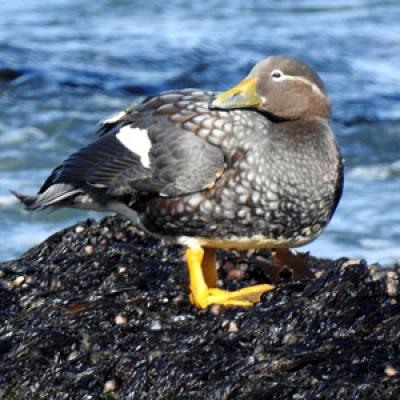Nautical Trips inside de Deseado River
Isla de los Pájaros Trip
WILDLIFE SIGHTING INSIDE THE DESEADO RIVER PROVINCIAL RESERVE
Also known as the classic trip inside Deseado´s River, this sailing is characterized by its stunning sightings of a variety of marine life like cormorants, penguins, terns and sea lions just to mention a few of them.
In the Isla de los Pájaros will visit a Magellanic penguin colony that coexist with other birds like oystercatchers, seagulls, neotropic cormorants among others.
Likewise, if the tide allows it, it will be posible the sailing inside red porphyries canyons of the jurassic period, in many cases accompanied by our Commersson´s dolphins, leaping out of the water, delighting children and grown-ups as well. We will also visit the local port and the Swift site, where the English sloop of war, HMS SWIFT, shipwrecked in 1770.
Also known as the classic trip inside Deseado´s River, this sailing is characterized by its stunning sightings of a variety of marine life like cormorants, penguins, terns and sea lions just to mention a few of them.
In the Isla de los Pájaros will visit a Magellanic penguin colony that coexist with other birds like oystercatchers, seagulls, neotropic cormorants among others.
Likewise, if the tide allows it, it will be posible the sailing inside red porphyries canyons of the jurassic period, in many cases accompanied by our Commersson´s dolphins, leaping out of the water, delighting children and grown-ups as well. We will also visit the local port and the Swift site, where the English sloop of war, HMS SWIFT, shipwrecked in 1770.
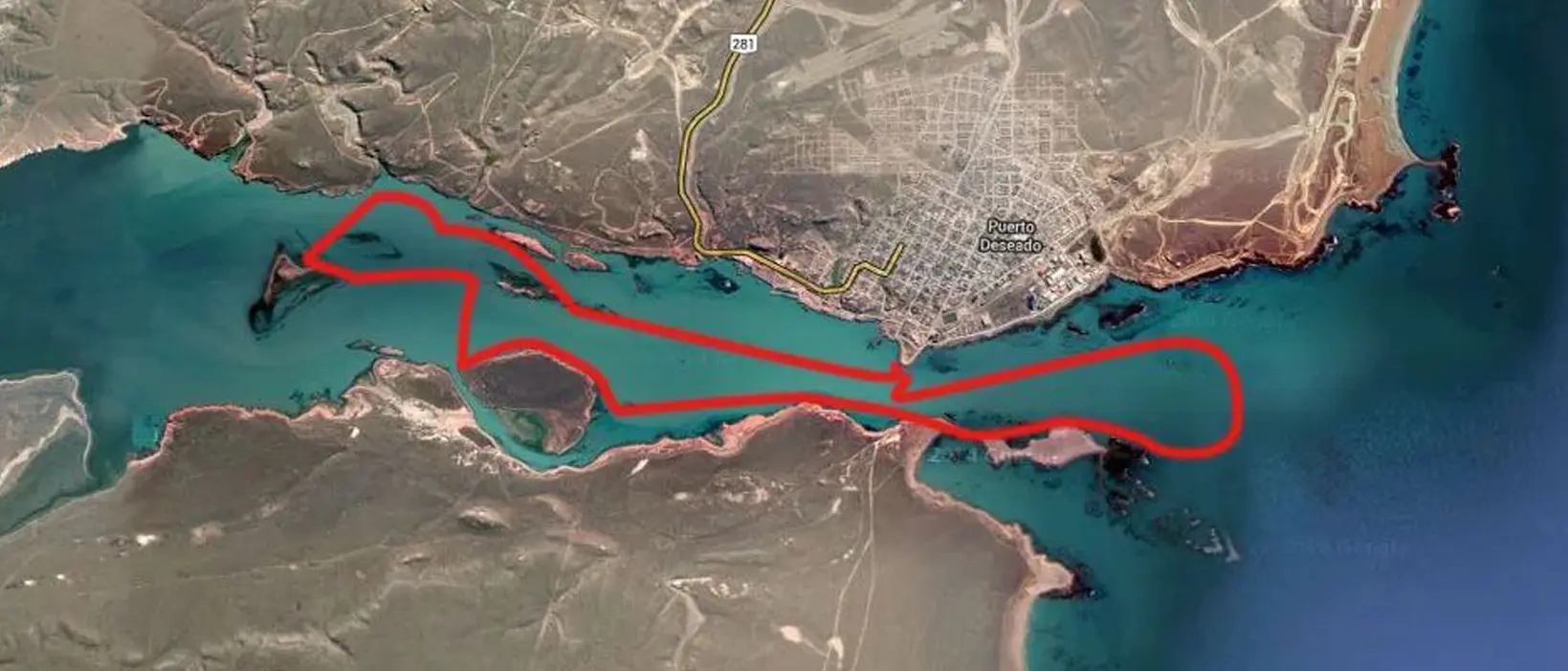

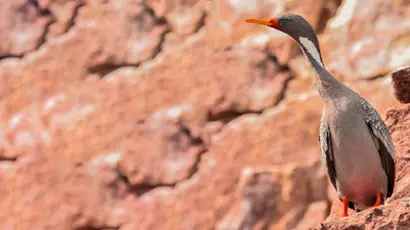
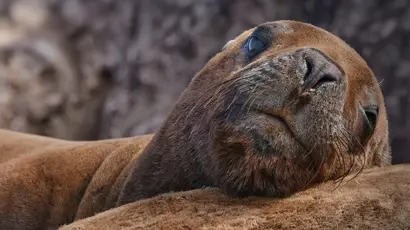
Travel is rebellion on its purest forms.
Places we go
Isla Chaffers, Barranca de los Cormoranes (Isla Elena); Isla Larga, Isla de los Pájaros, Cdon Torcido, Isla Quiroga, Isla Quinta, Sitio Swift, Puerto local
We leave from our jetty towards the mouth of the estuary, where you can visit “Isla Chaffers”, which houses the largest penguin colony in the Ría Deseado. Here it is common to see groups of bottlenose dolphins, which generally come to play with the boat to the delight of tourists. Likewise, it is possible to see a great variety of birds such as Antarctic pigeons, black and southern oystercatchers, gray gulls and crested ducks. Eventually, at the mouth it is possible to enjoy the company of the acrobatic and agile southern dolphins.
We continue the navigation towards the interior of the estuary until we reach the "Barranca de los Cormoranes (Isla Elena)". This ravine is the ideal place for the nesting of the gray and rock cormorant. Species such as the gray gull, the black oystercatcher and the witch heron usually share the same habitat. In order not to disturb the natural balance, we carry out this section of the excursion at a very low speed, which allows us to contemplate and photograph the different species up close.
Later we approached the "Isla Larga". There we will observe a small colony of South American terns interacting with groups of imperial shags. Generally, this island is used as a resting place for South American sea lions, making it an interesting roost where it is possible to see these magnificent marine mammals up close.
We continue the navigation towards the interior of the estuary until we reach the "Barranca de los Cormoranes (Isla Elena)". This ravine is the ideal place for the nesting of the gray and rock cormorant. Species such as the gray gull, the black oystercatcher and the witch heron usually share the same habitat. In order not to disturb the natural balance, we carry out this section of the excursion at a very low speed, which allows us to contemplate and photograph the different species up close.
Later we approached the "Isla Larga". There we will observe a small colony of South American terns interacting with groups of imperial shags. Generally, this island is used as a resting place for South American sea lions, making it an interesting roost where it is possible to see these magnificent marine mammals up close.
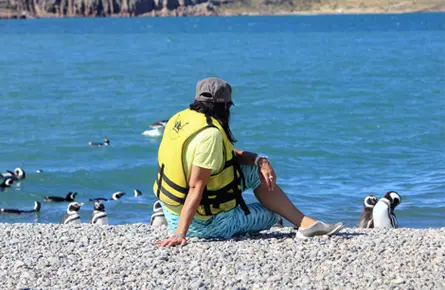
This first stage of the tour culminates in the "Isla de los Pájaros". Then we disembark, and through a guided walk along the coast, we will observe how the zampa, xerophytic vegetation that covers most of the island, provides the appropriate protection for the nests of an important colony of Magellanic penguins. However, in the center of the island the vegetation is sparse, which is why penguins dig their nests underground. It should be noted that this is the only place in the estuary where the biguá cormorant nests, which specializes in building its nests on the bushes. Both Kelp Gulls and Oystercatchers can be seen all over the island.
At the end of the tour, we will enjoy a moment in the company of the penguins, and then continue with the excursion aboard the boat. The return is made by the north bank of the estuary, entering the “Cañadón Torcido” with the high tides, a name given to it due to its twisted topography. In this area it is common to find adult specimens of great maca followed by their chicks.
On “Isla Quiroga” and along “Isla Quinta”, we can find groups of the friendly steam duck. Sailing near the local port, where large fishing and merchant ships are moored, we will reconnoitre the site where the English corvette "HMS Swift" sank in 1770. This corvette was discovered in the early 1980s by a group of young people from Deseas and constitutes the first underwater archeology project in our country. Finally we will arrive at the jetty, ending the excursion.
At the end of the tour, we will enjoy a moment in the company of the penguins, and then continue with the excursion aboard the boat. The return is made by the north bank of the estuary, entering the “Cañadón Torcido” with the high tides, a name given to it due to its twisted topography. In this area it is common to find adult specimens of great maca followed by their chicks.
On “Isla Quiroga” and along “Isla Quinta”, we can find groups of the friendly steam duck. Sailing near the local port, where large fishing and merchant ships are moored, we will reconnoitre the site where the English corvette "HMS Swift" sank in 1770. This corvette was discovered in the early 1980s by a group of young people from Deseas and constitutes the first underwater archeology project in our country. Finally we will arrive at the jetty, ending the excursion.
Requirements
Physical state: medium
Length
2 hours
Includes
Guided experience by bilingual marine biology
Difficulty level
Easy
Departures
Daily
Usually at 3pm.
What to bring
Trekking footwear.
Sunscreen. Water.
Sunscreen. Water.
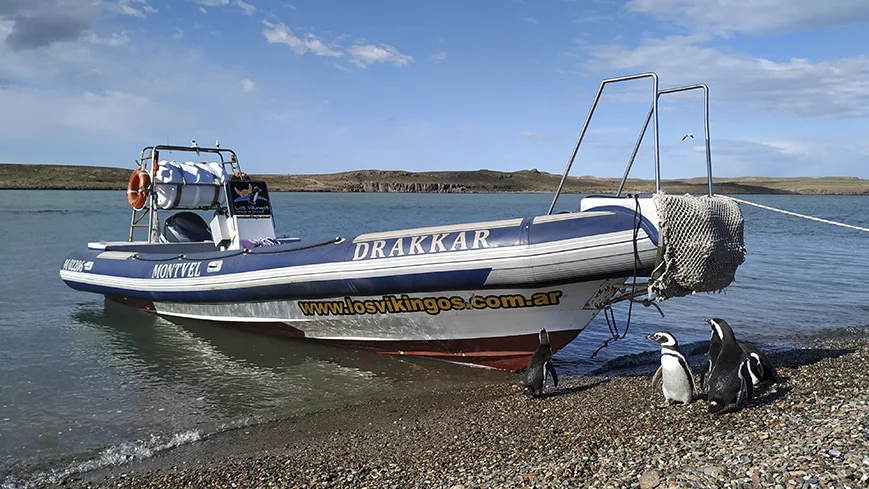
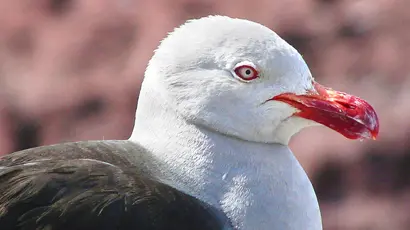
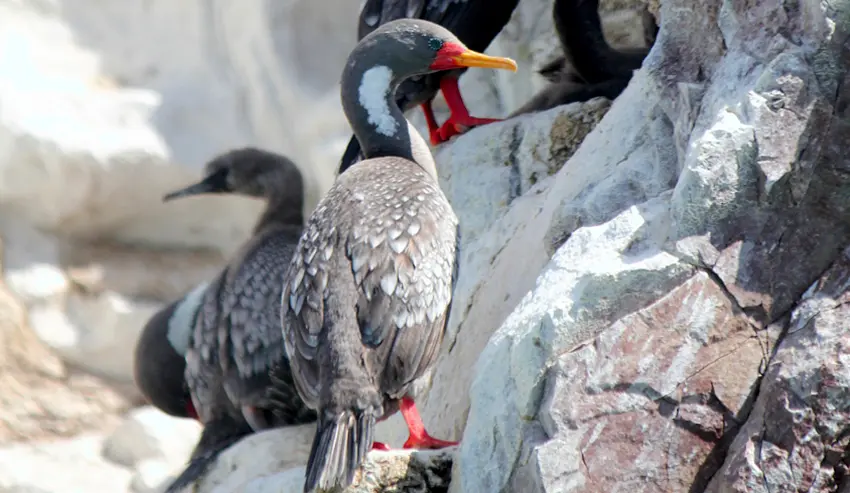
Testimony

